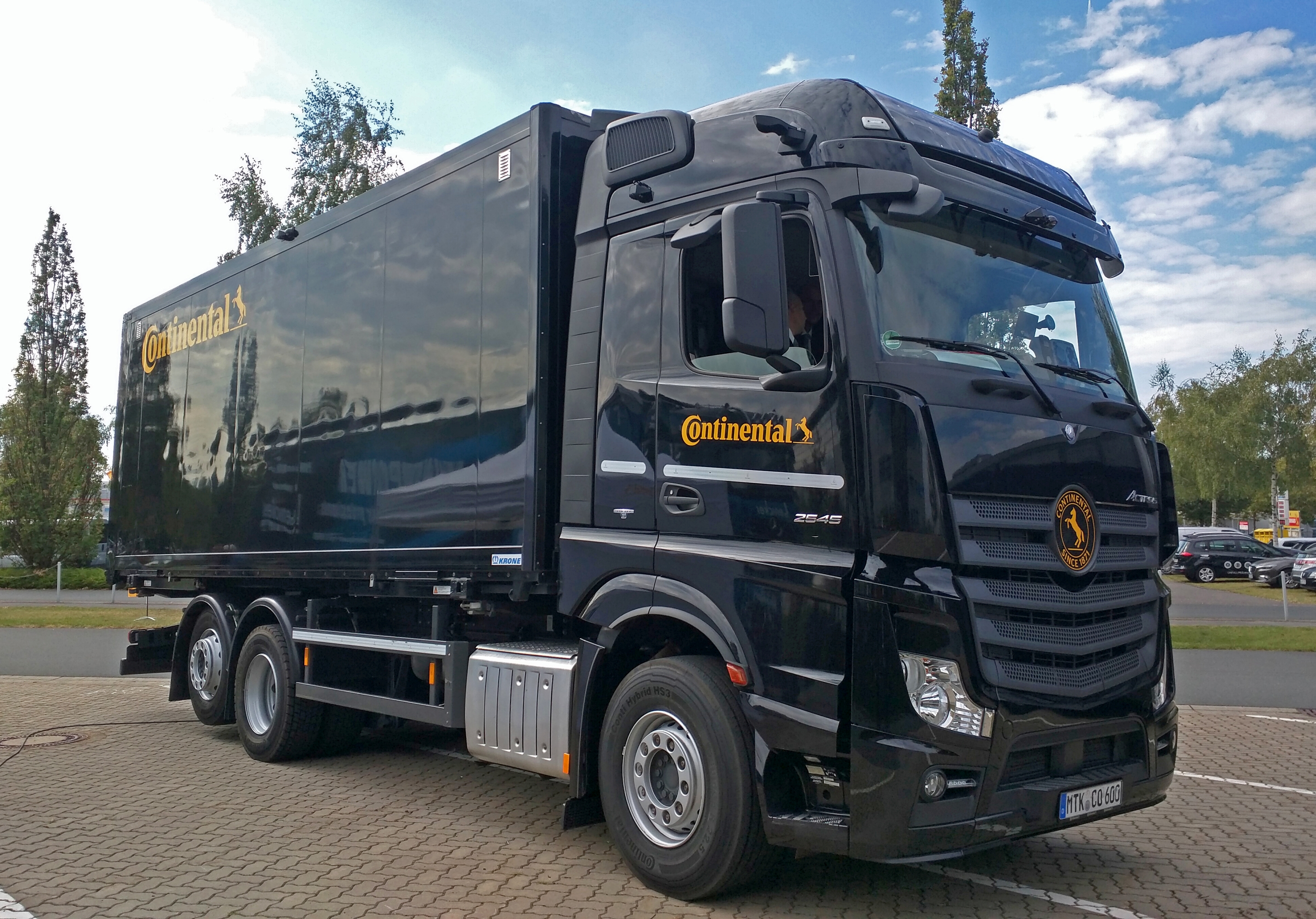Fraunhofer CSP and Continental develop flexible photovoltaic modules for trucks
Electricity is produced where it is needed – Continental Automotive GmbH and the Fraunhofer Center for Silicon Photovoltaics CSP have now moved a step closer to this problem-solving approach for trucks: At the IAA Commercial Vehicles they showed a truck with integrated solar modules on the roof and the wind deflector of the driver’s cab.

The integration of photovoltaic modules in mobile applications is tempting: The vehicle becomes a rolling power plant and can partly cover its own energy requirements, without having to stop at the fuel dispensing pump or charging station. Against the background of the trend towards electric and hybrid vehicles, this approach becomes even more significant.
Yet the challenges are considerable: Even when added together, the roof, engine hood and even the rear windows provide only a small area. The modules cannot be continuously orientated directly towards the sun, because the car moves in different directions. The rear ventilation of the modules in rising temperatures must also be taken into account, and the modules should not increase the vehicle weight unnecessarily. Lastly, but not least: standard photovoltaic modules are hardly flexible at all.
For many years, the Fraunhofer CSP in Halle (Saale) has had extensive expertise in the development of special modules for specific applications, which are directed at precisely these challenges. The research institute is now showing what is possible with them with a demonstrator on the Conti innovation truck, outdoor site west side car park P35 (registration in Hall 17, Stand A06/B11) of the IAA Commercial Vehicles: Working in direct collaboration with Continental Automotive GmbH, the Fraunhofer researchers have developed two photovoltaic modules for integration in mobile applications, which are attached to the roof and the wind deflector of the driver’s cab.
»Photovoltaic modules for vehicle roofs must be mechanically, electrically and geometrically flexible. We have therefore opted for a lightweight concept with a specific interconnection layout of highly efficient back-contact solar cells and have also ensured that an attractive design is possible«, said Prof. Dr. Jens Schneider, Head of the Module Technology Group at the Fraunhofer CSP. »By using solar energy, energy can be refuelled anywhere; this is an important advantage of electromobility. With solutions for the integration of photovoltaics in mobile applications, we want to help to reduce energy demand and emissions in transport and logistics traffic also«, he added.
The electricity yield generated from the solar radiation on the roof – similar to a car such as the Nissan Leaf (solar roof spoiler) or Toyota Prius (sliding solar roof) – is not sufficient to drive the vehicle over long distances. However, the modules with a total output of 270 watt peak could, for example, supply on-board systems such as the radio, air-conditioning or navigation systems and thus relieve the load on other energy sources accordingly.